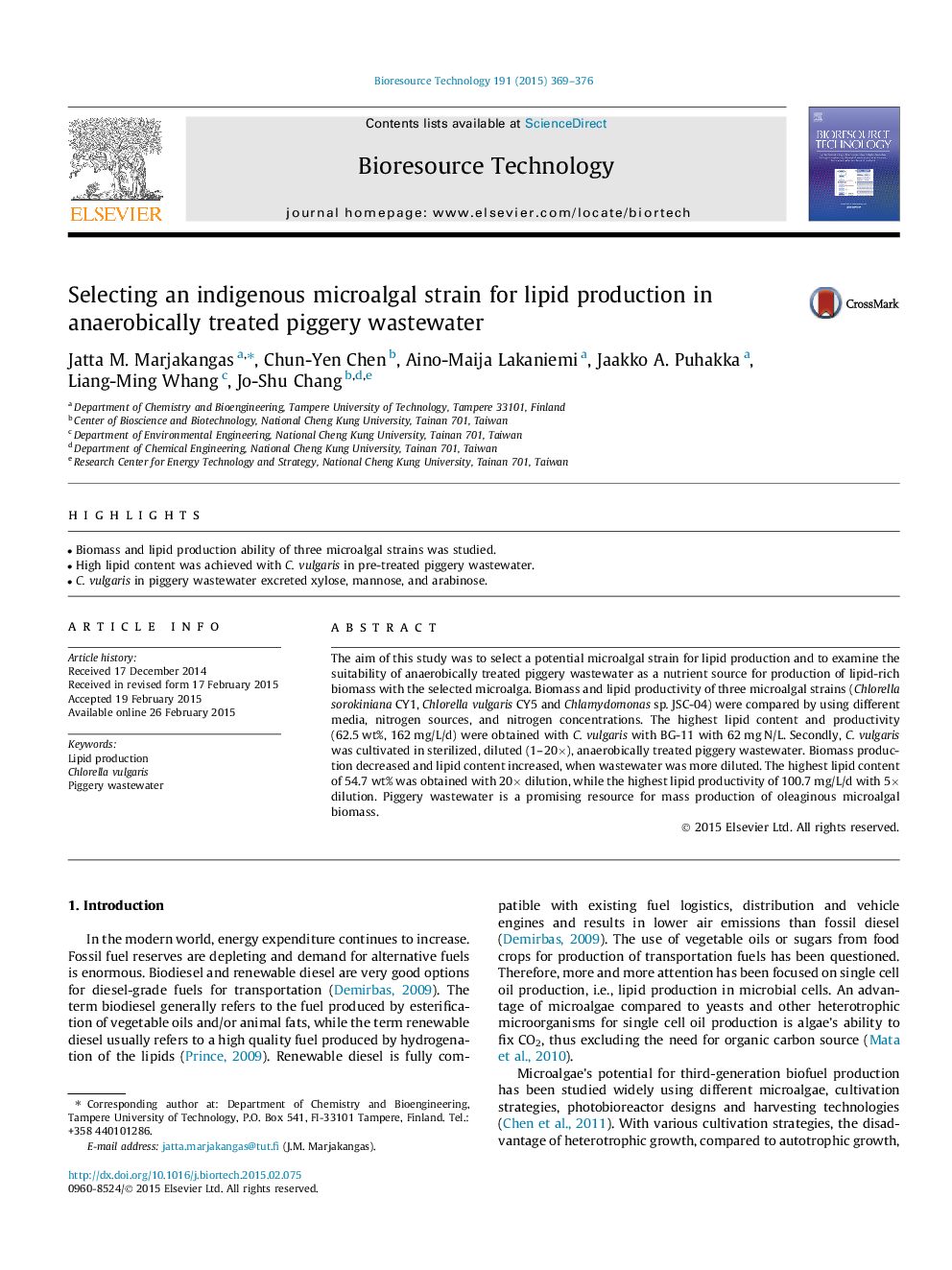| کد مقاله | کد نشریه | سال انتشار | مقاله انگلیسی | نسخه تمام متن |
|---|---|---|---|---|
| 679544 | 1459952 | 2015 | 8 صفحه PDF | دانلود رایگان |
• Biomass and lipid production ability of three microalgal strains was studied.
• High lipid content was achieved with C. vulgaris in pre-treated piggery wastewater.
• C. vulgaris in piggery wastewater excreted xylose, mannose, and arabinose.
The aim of this study was to select a potential microalgal strain for lipid production and to examine the suitability of anaerobically treated piggery wastewater as a nutrient source for production of lipid-rich biomass with the selected microalga. Biomass and lipid productivity of three microalgal strains (Chlorella sorokiniana CY1, Chlorella vulgaris CY5 and Chlamydomonas sp. JSC-04) were compared by using different media, nitrogen sources, and nitrogen concentrations. The highest lipid content and productivity (62.5 wt%, 162 mg/L/d) were obtained with C. vulgaris with BG-11 with 62 mg N/L. Secondly, C. vulgaris was cultivated in sterilized, diluted (1–20×), anaerobically treated piggery wastewater. Biomass production decreased and lipid content increased, when wastewater was more diluted. The highest lipid content of 54.7 wt% was obtained with 20× dilution, while the highest lipid productivity of 100.7 mg/L/d with 5× dilution. Piggery wastewater is a promising resource for mass production of oleaginous microalgal biomass.
Journal: Bioresource Technology - Volume 191, September 2015, Pages 369–376
